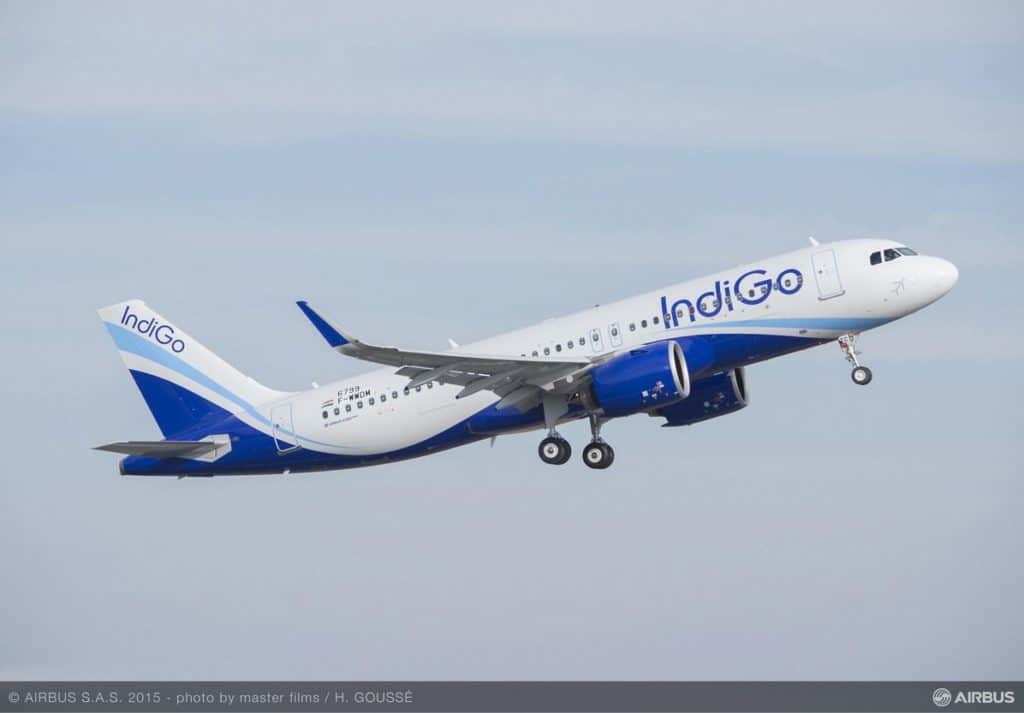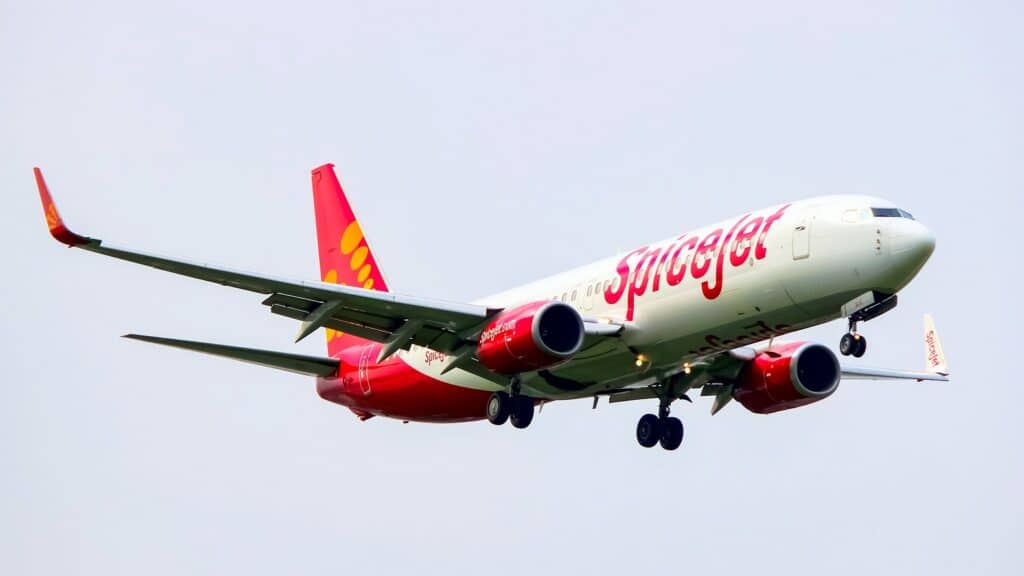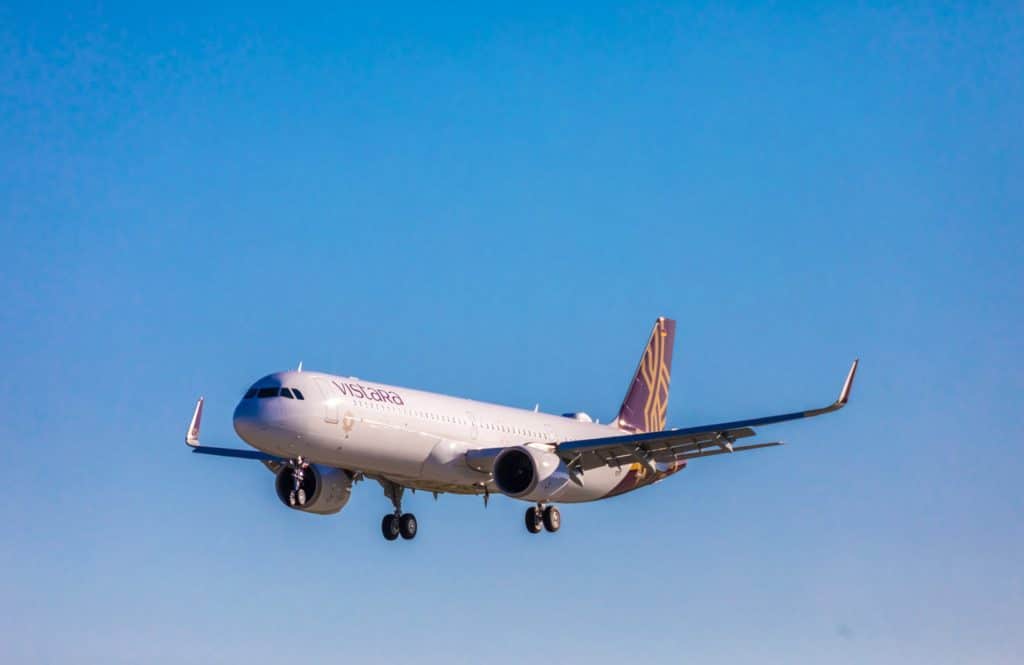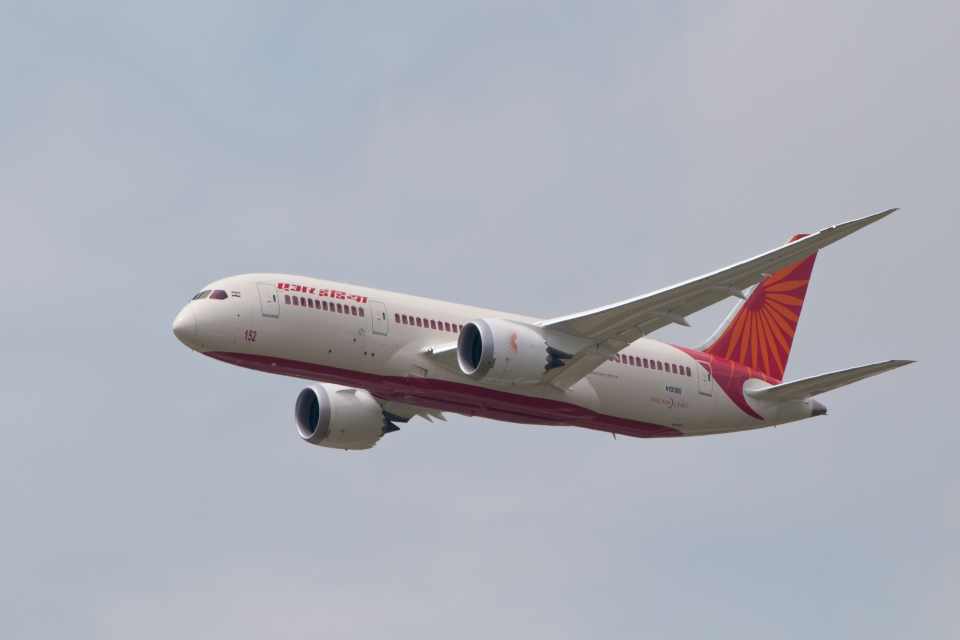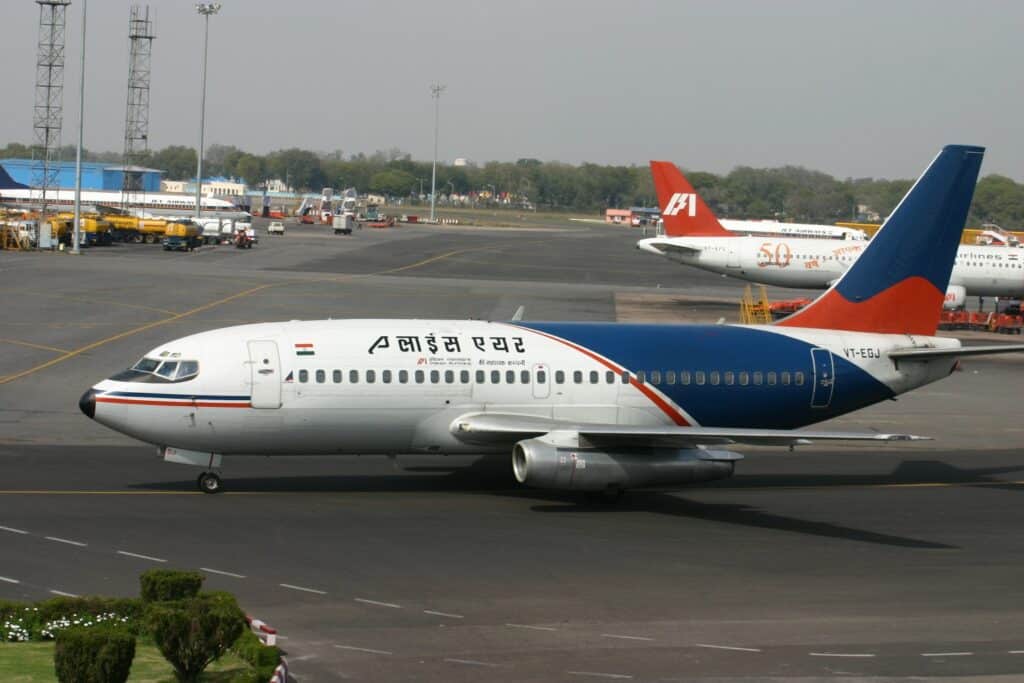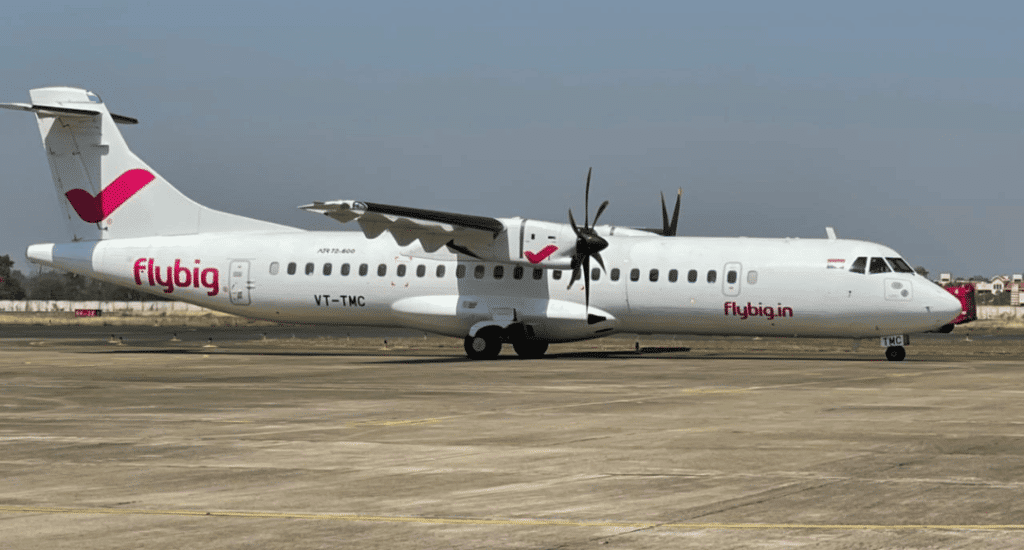Aviation
Top 10 Best Airlines In India In 2022
Some Indian airlines are listed along with their rankings based on air traffic and market share for 2022.

Some Indian airlines are listed along with their rankings based on air traffic and market share for 2022.
1. Indigo Airlines
Indigo is an Indian low-cost carrier airline with its main office in Gurgaon, Haryana. With over 64 million (6.4 crores) passengers carried in the financial year 2018–19, it is the largest airline in India in terms of both passengers carried and fleet size. In July 2006, it received its first Flight.
In the first quarter, Indigo carried 132 lakh passengers and had a 53.8 percent market share. In the month of June’s second quarter, it carried 183 lakh passengers and had a 56.3 percent market share.
2. Go First Airlines
Go First is an Indian ultra-low-cost carrier with its headquarters in Mumbai, Maharashtra. It was the fifth-largest airline in India and flew to 36 locations daily on more than 330 flights, including 27 domestic and 9 overseas destinations. It was established in November 2005. In the first quarter of 2022,
Go First carried 24.14 lakh passengers and had a 9.8 percent market share. While in the second quarter, it carried 33.84 lakh passengers and had a 10.4 percent market share.
3. Spice jet Airlines
A low-cost airline based in India, SpiceJet, has its main office in Gurgaon, Haryana. The airline operates 630 daily flights to 64 destinations, including 54 Indian and 15 international destinations, out of its bases in Delhi and Hyderabad, making it the second largest domestic carrier in the nation by a number of passengers carried. In May 2005, the airline carried out its initial flight.
In the first quarter of 2022, Spice Jet carried 25.21 lakh passengers and had a 10.2 percent market share. Further in June the second quarter of 2022, Spice Jet carried 31.55 lakh passengers and had a 9.7 percent market share.
4. Vistara Airlines
An Indian full-service airline called Vistara is situated in Gurgaon, with Indira Gandhi International Airport serving as its hub. The carrier, a partnership between Singapore Airlines and Tata Sons, launched operations on January 9th, 2015, with service between Delhi and Mumbai. By June 2016, the airline has transported over two million passengers.
In the first quarter of 2022, Vistara carried 21.83 lakh passengers and had an 8.8 percent market share. In the second quarter of 2022, it carried 28.79 lakh passengers and had an 8.9 percent market share.
5. Air India Airlines
The national airline of India is Air India, which is based in New Delhi.102 domestic and international destinations are served by the fleet of Airbus and Boeing aircraft operated by Air India. In 1932, J. R. D. Tata established the airline Tata Airlines.
In the first quarter of 2022, air India carried 24.47 lakh passengers and had a 9.9 percent market share. In the second quarter, it carried 24.32 lakh passengers and had a 7.5 percent market share.
6. Air Asia Airlines
A multinational low-cost airline with its main office not far from Kuala Lumpur, Malaysia, is Air Asia. By fleet size and destinations, it is Malaysia’s biggest airline. With more than 165 locations in 25 countries, Air Asia offers regular domestic and international flights. It was founded in 1993.
Air Asia had a market share of 5.8% in the first quarter of 2022 and carried 14.39 lakh passengers. In the second quarter of 2022, June it carried 18.68 lakh passengers and had a 5.7 percent market share.
7. Alliance Air
Alliance Air is a part of Air India Asset Holdings Private Limited (AIAHL). It was established in April 1996 as a fully-owned subsidiary of Indian Airlines and mostly operates domestic routes as part of the government’s Regional Connectivity Scheme.
Alliance Air carried 3.37 lakh passengers and had a 1.4 percent market share in the first quarter of 2022. In the second quarter, it carried 3.66 lakh passengers and had a 1.1 percent market share.
8. Fly Big Airlines
A regional airline called Fly Big is situated in Indore, Madhya Pradesh, India. The airline started flying in December 2020, and its primary goal is to connect tier-2 cities in India. In the first quarter of 2022,
Fly Big carried 0.30 lakh passengers and had a 0.1 percent market share. In the second quarter of 2022, it carried 0.63 lakh passengers and had a 0.2 percent market share.
9. Star Air
An Indian commuter airline called Star Air is based at Bangalore, Karnataka’s Kempegowda International Airport. It began operating in January 2019 and offered flights within the state of Karnataka. In 2017, it was founded.
Star Air had 0.54 lakh passengers and a 0.2 percent market share in the first quarter of 2022. In the second quarter, it carried 0.63 lakh passengers and maintained the same market share.
10. Akasa airlines
The newest airline, Akasa Air, launched its initial flight on August 7, 2022. SNV Aviation Private Limited’s Akasa Air is a low-cost airline operating out of Mumbai, Maharashtra, India. Vinay Dube and Aditya Gosh started it. After obtaining its first Boeing 737 MAX aircraft, the airline launched its commercial operations on August 7, 2022, with its maiden flight service between Mumbai and Ahmedabad.
Rakesh Jhunjhunwala, an Indian billionaire trader, contributed $35 million for a 40% interest in the airline in July 2021. In October 2021, the Ministry of Civil Aviation issued it a No Objection Certificate.

Aerospace
India is set to build a central command for the Air Traffic Control system, called ISHAN

India’s air traffic growth has led to increased responsibilities for air traffic control. The Airports Authority of India (AAI) is considering centralizing air traffic control for aircraft, dividing the country into four regions. The goal is to consolidate India’s segmented airspace into a single entity to improve air traffic management (ATM) efficiency, safety, and smoothness.
Recently, the AAI invited expressions of interest to develop a detailed project report for the Indian Single Sky Harmonized Air Traffic Management (ISHAN) initiative in Nagpur. Under this plan, air traffic controllers in Nagpur would handle domestic flights flying above 25,000 feet, eliminating the need for coordination among controllers in different regions.
For domestic regional flights operating above 25,000 feet, control would shift to the central command in Nagpur. This consolidation aims to enhance airline operations, increase flight handling capacity, and reduce congestion and flight times for passengers.
Currently, the AAI provides ATM services over Indian airspace and adjoining oceanic areas, covering over 2.8 million square nautical miles. This airspace is divided into four flight information regions (FIRs) in Delhi, Mumbai, Kolkata, and Chennai, along with a sub-FIR in Guwahati.
FIRs are responsible for providing air traffic services, including weather information, visibility, and search and rescue assistance. The proposed unification under the ISHAN initiative aligns with the projected growth of the aviation industry, which anticipates a doubling of domestic passenger traffic by 2030.
Aviation
Airbus is set to increase the production rate for the A350 as demand surges

Airbus SE is set to boost production of its advanced A350 widebody jet as it capitalizes on rising demand for long-distance travel and wide-body aircraft, amidst the ongoing crisis affecting its competitor Boeing due to issues with the B737 Max.
The surge in orders for Airbus’s A350 aircraft has instilled confidence in the company, prompting them to ramp up production rates. This move is particularly advantageous as Boeing continues to grapple with production quality issues surrounding its 787 and 777x aircraft.
In 2024 alone, Airbus has received 137 orders for the A350, signaling a need to expand manufacturing capabilities to meet customer demands. With 1,277 orders received and 592 aircraft delivered as of April 2024, Airbus is poised to fulfill pending deliveries efficiently.
The European aircraft manufacturer announced plans to increase production of A350 jets to 12 per month by 2028, surpassing earlier projections aiming for 10 per month by 2026. This decision was disclosed alongside the company’s first-quarter figures.
The Asian market is proving lucrative for the A350, with significant orders from airlines like Indigo and Air India, totaling nearly 70 aircraft commitments for the future. Meanwhile, Airbus is progressing with its A220 and A320 programs, aiming for a monthly production rate of 14 and 75 aircraft, respectively, by 2026. Additionally, the long-range A321XLR is anticipated to commence service in the third quarter of the current year.
In contrast, Boeing has been compelled to scale back production due to regulatory pressures aimed at enhancing factory processes. While Airbus anticipates a positive market outlook, Boeing continues to face challenges with FAA certification and quality approvals, resulting in ongoing delays for its 737 Max and 777x models.
Financially, Boeing reported a significant cash burn of $3.9 billion in the first quarter, leaving it with $7.5 billion in cash and short-term securities by the quarter’s end, down from $16 billion at the beginning of the year. Consequently, Boeing’s stock has plummeted by 38% in the year so far, contrasting with Airbus’s 14% gain, marking Boeing’s lowest performance in over a year.
For a full listing including details on customers and regions, as well as historical data for the previous year, go to the download section below.
- March 2024 deliveries: 63 deliveries to 32 customers
- March 2024 gross orders: 137
- 2024 deliveries to date: 142 deliveries to 45 customers
| Single-Aisle | A300/A310 | A330 | A340 | A350 | A380 | TOTAL | |
|---|---|---|---|---|---|---|---|
| Total Orders | 19470 | 816 | 1774 | 377 | 1277 | 251 | 23965 |
| Total Deliveries | 11705 | 816 | 1598 | 377 | 592 | 251 | 15339 |
| Aircraft in Operation | 11007 | 271 | 1482 | 202 | 591 | 234 | 13787 |
Aviation
All passengers killed in plane crash, after pilot let his children to control the plane

When boarding a plane, passengers entrust their safety to the skilled hands of the pilot. However, tragedy struck when one of the flight ended in disaster as all passengers lost their lives in a horrific plane crash.
In 1994, during a flight from Moscow to Hong Kong, tragedy struck as an Aeroflot relief pilot made a fateful decision. In a move that would have devastating consequences, the pilot invited his own children into the cockpit to play with the controls. Little did anyone know, this seemingly innocent gesture would lead to the loss of all 75 lives aboard the aircraft.
It was a seemingly innocent act that led to catastrophic results. The relief pilot, Mr. Kudrinsky, invited his two children, Yana, 12, and Eldar, 15, into the cockpit during the late hours of the night. Little did anyone know, this simple gesture would set off a chain of events that would end in tragedy.
Once in the cockpit, the children were allowed to sit in the captain’s chair and play with the controls, unaware that they should have been disabled as the plane was in autopilot mode.
Eldar, perhaps in a moment of curiosity or innocence, held the control column down for a mere 30 seconds. Yet, in those brief moments, the autopilot disengaged, thrusting the aircraft into manual control.
By the time the pilots regained their seats and attempted to regain control, it was too late. Despite their efforts to pull the plane out of a dive, they overcorrected, causing the flight to climb almost vertically, ultimately stalling it.
Final moment Flight 593 crash
In the final moments, as the pilots struggled to stabilize the aircraft, Flight 593 crashed into the Kuznetsk Alatau Mountain range in southern Russia, completely obliterating the plane and claiming the lives of everyone on board.
Investigations revealed a chilling truth: there was no evidence of technical failure. Instead, the crash was attributed to the unthinkable decision to allow inexperienced hands to manipulate the controls of a commercial aircraft.
The black box recording captured the harrowing sequence of events, providing a grim reminder of the human cost of a lapse in judgment. In just over two minutes, the lives of all on board were tragically short, leaving behind a legacy of sorrow and unanswered questions.

